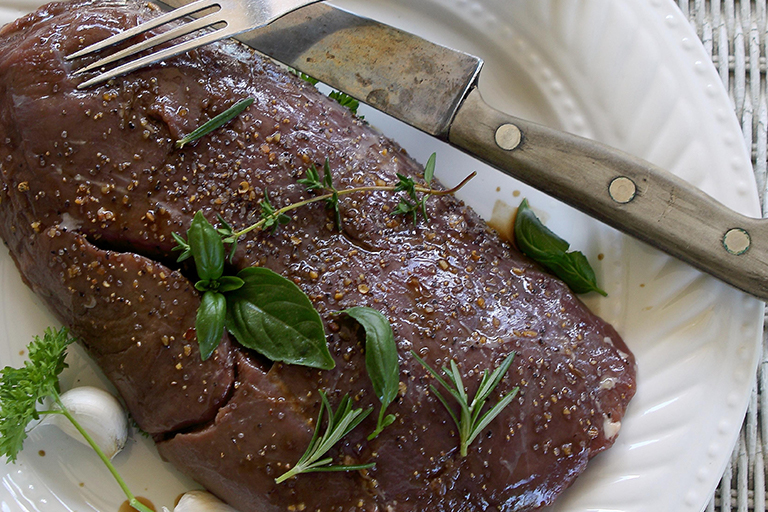By Dennis Smith
The countless hours spent watching, waiting and stalking game in the wild is the essence of hunting, but converting a deer or elk carcass into stacks of succulent steaks and roasts — or, as I referred to it in last month’s column, “making meat” — can be a gratifying experience, too. And, as it turns out, wild game not only tastes good, it’s also better for you than domestic meat.
Nutrition experts at North Dakota State and Pennsylvania State universities compared the fat and cholesterol content of wild game meat with domestic beef and pork, and concluded that game meat is definitely a heart healthy alternative. Wild venison is considerably lower in calories, fat and cholesterol than beef and pork. According to the USDA, a 100-gram serving of wild deer or elk contains about 1.4 grams of fat compared to 2.7 grams in beef and 4.9 grams in pork.
Some game meat, such as antelope, may be slightly higher in cholesterol than domestic meat, but the combination of more lean body tissue, generally fewer calories, less saturated fat and a significantly higher percentage of cholesterol-reducing polyunsaturated fatty acids still makes wild game a healthier overall choice.
Butchering your own meat requires a bit of specialized knowledge, but anyone can learn to do it. Sporting magazines like Field & Stream and Outdoor Life publish illustrated, step-by-step instructions for butchering big-game animals in their fall issues every year, and several guidebooks are available at outdoor shops as well. My father taught me how to do it, and I passed what I learned on to both my sons. I suspect my grandchildren will learn the same way.
Most hunters like to salvage as many individual steaks and roasts as they can from their deer or elk and grind the remainder into burger, but I know some who process their entire animal into a variety of spicy sausages and jerky. My own preference is to bone the meat completely, leaving the loins (or backstraps) intact to be cut into thick steaks for the grill. I reserve the hindquarter cuts for sauerbraten and cube the chuck and brisket for bourguignon, goulashes and stews. If you lean toward the exotic, you could forego individual loin steaks in favor of serving the entire saddle as a marinated baron of venison. For really special occasions, you could serve both the saddle and rump together as a single heroic cut called the haunch.
Of course, you could also pay a professional game processor to cut your deer up for you, but then you’d miss out on all those custom cuts, not to mention the fun of learning how to make meat.
Dennis is a freelance outdoors writer and photographer whose work appears nationally. He lives in Loveland.

